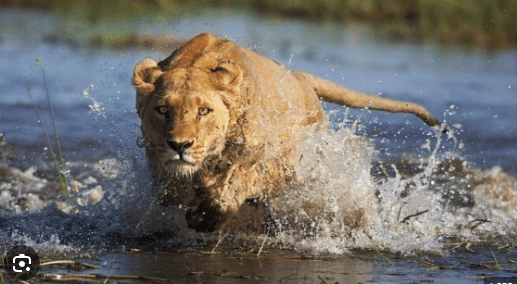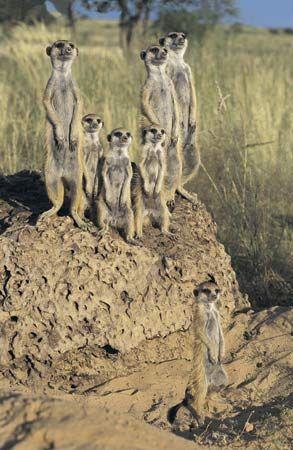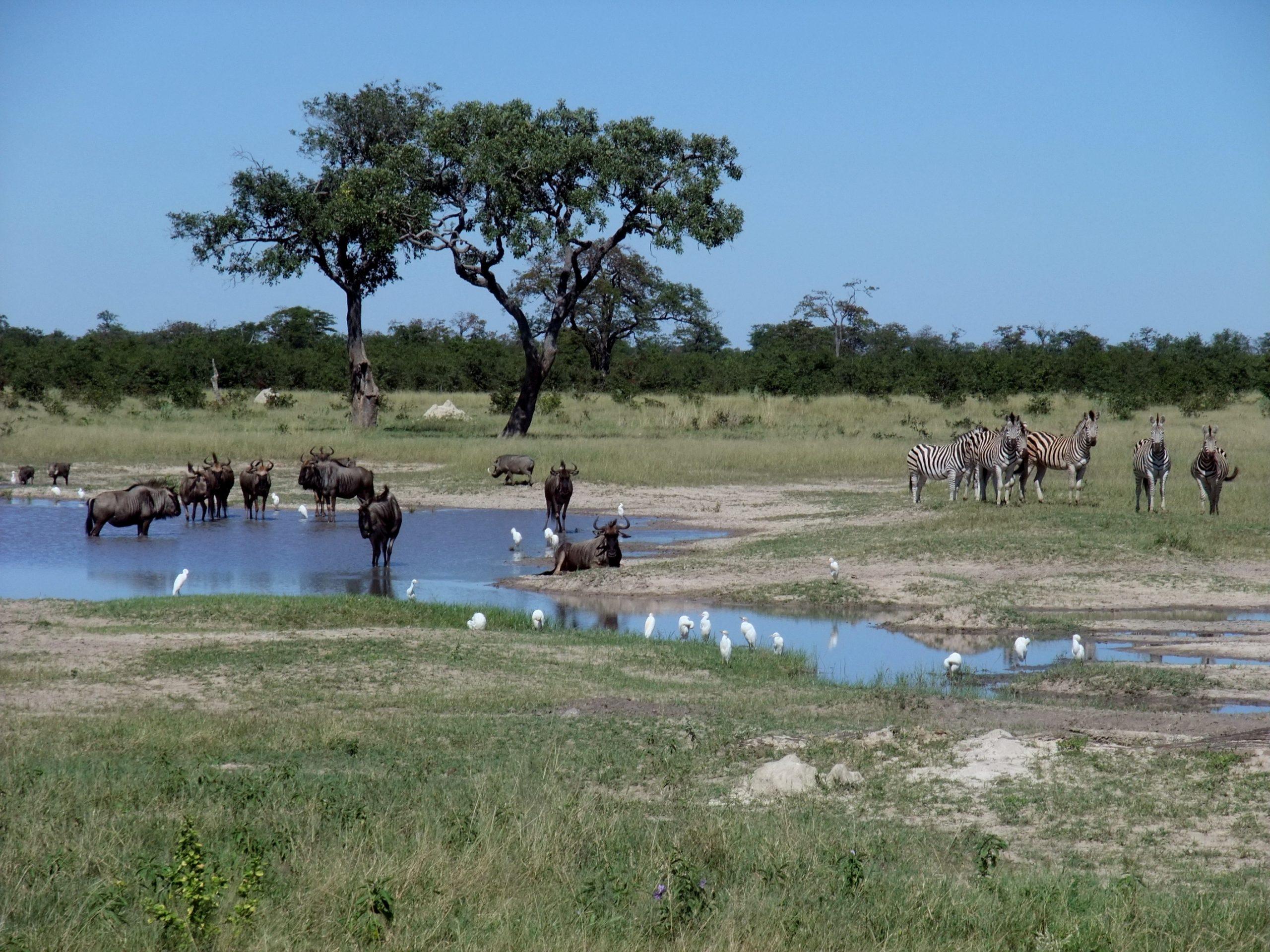Latest update March 29th, 2025 5:35 AM
Botswana
Nov 24, 2024 Features / Columnists, News, Waterfalls Magazine
…Country Profile
 Kaieteur News- Botswana, landlocked country in the center of Southern Africa. The territory is roughly triangular—approximately 600 miles (965 km) from north to south and 600 miles from east to west—with its eastern side protruding into a sharp point. Its eastern and southern borders are marked by river courses and an old wagon road; its western borders are lines of longitude and latitude through the Kalahari, and its northern borders combine straight lines with a river course. Within the confines of Botswana’s borders is a rich variety of wildlife, including many species of mammals, birds, reptiles, amphibians, and fish.
Kaieteur News- Botswana, landlocked country in the center of Southern Africa. The territory is roughly triangular—approximately 600 miles (965 km) from north to south and 600 miles from east to west—with its eastern side protruding into a sharp point. Its eastern and southern borders are marked by river courses and an old wagon road; its western borders are lines of longitude and latitude through the Kalahari, and its northern borders combine straight lines with a river course. Within the confines of Botswana’s borders is a rich variety of wildlife, including many species of mammals, birds, reptiles, amphibians, and fish.
Before its independence in 1966, Botswana was a British protectorate known as Bechuanaland. It was also one of the poorest and least-developed states in the world. The country is named after its dominant ethnic group, the Tswana (“Bechuana” in older variant orthography). Since its independence the Republic of Botswana has gained international stature as a peaceful and increasingly prosperous democratic state. It is a member of the United Nations, the Commonwealth, the African Union (AU), and the Southern African Development Community (SADC). The secretariat of SADC is housed in the capital of Botswana, Gaborone (until 1969 spelled Gaberones—i.e., Gaborone’s town, after the tribal chief who had his capital at the site during the colonial period).
Cultural life
The cultural life of Botswana reflects the dual heritage and intermingling of Tswana and English cultural domination. The two languages and cultures are subtly mixed and alternated in urban and official situations. Western dress has been general among people in Botswana, except at the poorest level, since the late 19th century. Rites of burial, marriage, and birth have been adapted to Christianity and remain extremely important in Botswana life. Football (soccer) is the national sport, played on fields and in stadiums across the country every Saturday.
Common diet and cuisine consist of sorghum and corn (maize) porridge, beans and other pulses, and traditional spinach, supplemented by tomatoes, potatoes, onions, and cabbage usually purchased from stores. Meat consumption has become more common with the opening of small butcheries selling beef. Traditional foods include dried phane caterpillars from mopane woodland, eaten as relish or snacks, fruits such as the wild morula plum, and beer made from sorghum or millet.
Traditional music, based on stringed instruments, and dance generally declined during the colonial period. After independence there was a revival of interest, particularly in music on the radio. The best-known modern art form incorporating traditional craftwork is basketry—most of it from northwestern Botswana—which is widely exported overseas. The author Bessie Head (1937–86) wrote novels in English that reflect the contemporary realities and history of Serowe. The publishing of fiction in Tswana was revived in the 1980s.
History of Botswana
The history of Botswana is in general the history of the Kalahari area, intermediate between the more populated savanna of the north and east and the less populated steppe of the south and west. Although reduced to a peripheral role in Southern Africa for most of the 20th century, at other times Botswana has been a central area of historical development.
Early pastoral and farming peoples
Khoisan-speaking hunters and herders
People speaking Khoisan (Khoe and San) languages have lived in Botswana for many thousands of years. Depression Shelter in the Tsodilo Hills has evidence of continuous Khoisan occupation from about 17,000 BCE to about 1650 CE. During the final centuries of the last millennium before the Common Era, some of the Khoi (Tshu-khwe) people of northern Botswana converted to pastoralism, herding their cattle and sheep on the rich pastures revealed by the retreating lakes and wetlands.
Bantu-speaking farmers
Meanwhile, the farming of grain crops and the speaking of Bantu languages were carried gradually southward from the Equator. By about 20 BCE such farmers were making and using iron tools on the upper Zambezi. The earliest dated Iron Age site in Botswana is an iron-smelting furnace in the Tswapong Hills near Palapye, dated about 190 CE and probably associated with Iron Age farmers from the Limpopo valley. The remains of small beehive-shaped houses made of grass matting, occupied by early Iron Age farmers around Molepolole, have been dated to about 420 CE. There is also evidence of early farming settlement west of the Okavango delta, in the Tsodilo Hills alongside Khoisan hunter and pastoralist sites, dated to about 550 CE. Archaeologists therefore have difficulty interpreting the hundreds of rock paintings in the Tsodilo Hills (designated a UNESCO World Heritage site in 2001) that were once assumed to be painted by “Bushman” (San) hunters remote from all pastoralist and farmer contact.
Eastern states and chiefdoms
From about 1095 CE southeastern Botswana saw the rise of a new culture, characterized by a site on Moritsane hill near Gabane. The Moritsane culture is historically associated with the Khalagari (Kgalagadi) chiefdoms, the westernmost dialect group of Sotho (or Sotho-Tswana) speakers.
The area within 50 or 60 miles (80 or 100 km) of Serowe saw a thriving farming culture, dominated by rulers living on Toutswe hill, between about the 7th and 13th centuries. The prosperity of the state was based on cattle herding, with large corrals in the capital town and in scores of smaller hilltop villages. (Ancient cattle corrals are identified by the peculiar grass growing on them.) The Toutswe people also hunted westward into the Kalahari and traded eastward along the Limpopo River.
Share this:
- Click to print (Opens in new window)
- Click to email a link to a friend (Opens in new window)
- Click to share on Facebook (Opens in new window)
- Click to share on WhatsApp (Opens in new window)
- Click to share on Twitter (Opens in new window)
- Click to share on Pinterest (Opens in new window)
- Click to share on Pocket (Opens in new window)
- Click to share on Tumblr (Opens in new window)
- Click to share on Reddit (Opens in new window)
- Click to share on LinkedIn (Opens in new window)
Related
Similar Articles

The Glenn Lall Show|| March, 17th, 2025
Follow on Tik Tok @Glennlall
THE BLUNT OF THE DAY

Sports
Mar 29, 2025
…Two days, eleven matches Kaieteur Sports- After two rounds of scintillating action in the 11th edition of the Milo/Massy Boys’ Under-18 Football Championship, eight teams have managed to...Features/Columnists
The PPP has started the intimidation
Peeping Tom… Kaieteur News- In politics, as in life, what goes around comes around. The People’s Progressive Party/Civic... more
The Caribbean: Destined to Grin and Bear the Consequences of Its Self-Created Vulnerabilities?
By Sir Ronald Sanders For decades, many Caribbean nations have grappled with dependence on a small number of powerful countries... more
Publisher’s Note
Freedom of speech is our core value at Kaieteur News. If the letter/e-mail you sent was not published, and you believe that its contents were not libellous, let us know, please contact us by phone or email.
Feel free to send us your comments and/or criticisms.
Contact: 624-6456; 225-8452; 225-8458; 225-8463; 225-8465; 225-8473 or 225-8491.
Or by Email: [email protected] / [email protected]
Weekend Cartoon

















